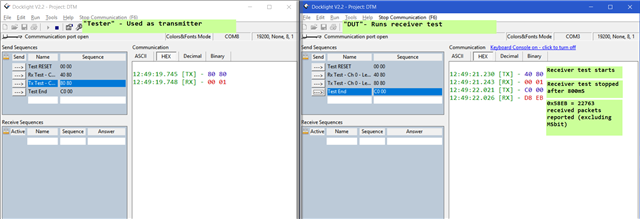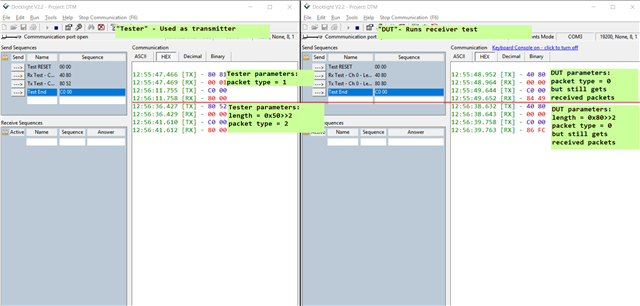Hello,
As our product (nRF52832, SDK14.2) is heading to radio certification, I was playing around with the DTM example but have some open questions.
I've flashed the DTM example to our device (DUT) and into a DK (PCA10040) that should emulate the tester.
Both the DUT and the 'Tester' are connected to serial terminal running on a PC (see figure 2 in nAN34)
In order to run LE_Receiver_Test on the DUT I do the following:
- Send 'Test RESET' command to both DUT & Tester
- Sending 'LE_Transmitter_Test' command to the Tester - Command code 0x8080 (Channel = 0, length = 2, packet type = 0)
- Send 'LE_Receiver_test' command to the DUT - Command code 0x4080 ((Channel = 0, length = 2, packet type = 0)
- After few seconds stops the DUT by sending command 'LE_Test_End' (0xC000)
I get a 'packet response event' from the DUT with some number (MSbit = 1 , e.g. 0x83B3).
For some reason beyond my grasp, I get similar packet response even if length & packet type values do not match between the Tester and DUT
My questions are:
- How fast does the transmitter test sends out test packets ?
- Do the packets number reported in the packet response events reflect the true number of good packet received?
if so, how come that the number is not consistent. I get relatively large numbers even for very short receiver test (see screen caps) - How can I calculate the PER as I don't know how many packets were transmitted?
- Strangely, many received packets are reported even if transmitter and receiver's test parameters are not matching...
Thanks for any advice.


